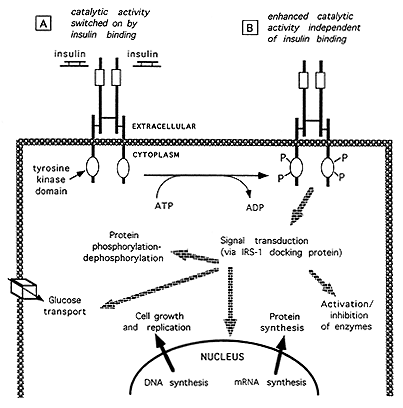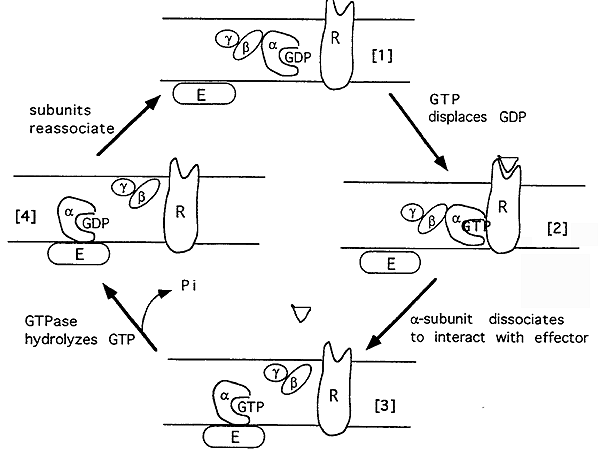
Insulin and Glucagon
Insulin Processing:

Physiological concentrations of the C-peptide can be measured and are a good indicator of the amount of Insulin being synthesized.
Glucose Induced Biosynthesis and Release of Insulin (b-cell pancreas):

Insulin Receptor:

Insulin Binding to it's Receptor Followed by Activation of the Receptor:

1. Insulin binds switching ON the receptor. Once the receptor is ON (catalytically active) insulin may disaccociate and be degraded.
2. The Tyr Kinase domain is phosphorylated.
3. A "cascade" of events takes place (see below).
4. Biochemical / Physiological Responses:
Proteins are phosphorylated/dephosphorylated
Glucose transport
Enzymes are activated/inhibited
Increased protein synthesis
Cell growth and replication
The Cascade of Events Following Receptor Activation:

Glucagon Biosynthesis (a-cell pancreas):

Glucagon Like Peptide-1 (GLP-1) is thought to link ingestion of nutrients to insulin release.
Glucagon Receptor (signal transduction):

Insulin ("Fed"): lowers blood glucose by utilizing it to Synthesize, Produce and Grow
increase the amount and activity of glycolytic enzymes
glycogenesis
increase protein synthesis
decrease protein degradation
increase the conversion of CHO's to fatty acids
Glucagon ("Fasted"): raises blood glucose by inducing glucose synthesis through Gluconeogenesis and Glycogenolysis
increase the amount and activity of gluconeogenic enzymes
glycogenolysis
Summary of Insulin and Glucagon Action on Glucose Metabolism:

© Dr. Noel Sturm 2002